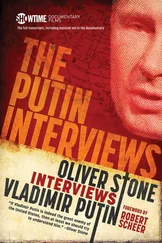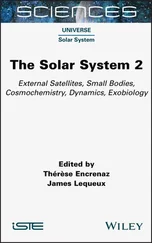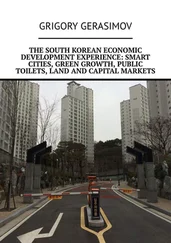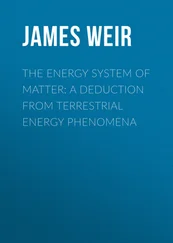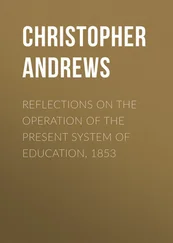Of course, the attitude of the general public was not the only or even the most important factor. It became evident around the same time that the process of post-Soviet transformation did not produce the institutions capable of acting as independent branches of power and of ensuring the implementation of their decisions if those decisions were at odds with the interests or the wishes of the ruling circle. The representative bodies of government and the judiciary failed to gain the support necessary to become real counterweights to the executive agencies or to the informal, semicriminal, and even fully criminal quasi corporations that were spontaneously growing up around the executive and relying upon the machinery of violence. Even then, the much-touted “formation of the state of law and order” turned out to be, at best, wishful thinking and, at worst, a hypocritical cover-up of a de facto recognition of “might is right” as a formative instrument of governance.
Therefore, no candidate vying for power independently of the ruling circle had even minimally functional institutions to rely upon. For such candidates, the only means to gain a solid footing would be to construct their own organized entities endowed with administrative and coercive power resources, but this course of action presented risks for Russia’s ruling party, and it was rejected by every responsible politician and public figure. Under those conditions, the country essentially faced a choice between the bad and the ugly, because a choice in favor of a political competition that would rely upon extralegal use of force would be essentially tantamount to choosing a state of civil war, even if it was not a full-blown civil war. And this, in turn, would have led to even more detrimental consequences than what we have before us today.
Admittedly, there are those who believe that, since the political system of the 1990s did not have such a high concentration of coercive, uniformed power as its fulcrum, it was therefore less centrally controlled and thus more democratic than its later variety was going to look, in 2005 or in 2010. Given that this opinion is rather popular among the liberal intelligentsia in Russia, let me comment upon this view.
It is an accurate observation inasmuch as it refers to the overall lack of governability as a feature of the socioeconomic situation at the time. However, as a matter of principle, no effective competition-based system can be built upon the loss of governability. The power wielded by warlords in confrontation with one another is a poor substitute for a competition among political teams that include more or less competent managers qualified to operate complicated government machinery. The diversity of political forces, also known as pluralism, implies a prevalence of democratic values in politics only in the presence of certain additional requirements.
The first of these requirements is the existence of relatively functional institutions in the country, which can transform such political diversity or pluralism from an end in itself into a force that makes institutions work in a more orderly fashion and increases officeholders’ accountability for developments in the country. If such institutions do not exist, as they didn’t exist in Russia in the late 1990s and don’t exist today, then it makes no sense to lament the “abduction” of democracy after the year 2000. What then remains of that claim about a“democratic government of Yeltsin’s liberal reformers” is merely the fact that, in the 1990s, the individuals in and around the Kremlin were closer to the Soviet-era liberal intelligentsia in terms of its political culture, ideology, and myths than were the group of people that took their place in the first decade of the twenty-first century. Nevertheless, if we pursue unbiased, dispassionate analysis of those two periods, it is obvious to me that the 1990s were merely an earlier, embryonic stage of the very same peripheral authoritarianism, a system that matured over the subsequent decade and a half. (Further justification for the use of the term “peripheral” in this context will be provided later in the book.)
Going back to the question of why Russia’s political system developed along the path that it did in the 1990s, let me mention several explanatory factors. These factors made the potential formation of a competition-based model of the “Western” type an extremely complicated and therefore unlikely possibility. First and foremost, in Russia in the 1990s—and most consequentially in the early 1990s—there was no consensus among the elites about the most general, most fundamental rules and propositions around which the prospective political and economic system of the “new” Russia was going to be formed. And the presence of such a consensus is the key prerequisite in the formation of a functioning political system based upon competition among political forces. The fundamental issues on the public agenda at the time included the following:
• What was the future of public property going to be in the postsocialist era?
• Which means of acquiring extensive private property were legitimate? What was the extent of its inviolability?
• In which areas of life were market relations and private ownership, including ownership by foreign governments and individuals, going to be acceptable?
On these foundational matters, the country was polarized—not at all on the fringes but, rather, among the members of the most influential groups of Russian society, who had great economic, administrative, and media resources at their disposal. This polarization also affected the understanding of national sovereignty and its potential limits in relation to both the outside world and Russia’s own citizens. Among other things, this included the fundamental concept of the boundaries between civil rights and national interests, as well as the limits of acceptable restrictions that could be imposed by government upon individual freedoms. In other words, society was polarized over issues that typically are not subject to political debates in competition-based systems because they reflect a consensus among the elites that has emerged over the course of history and that cannot and should not depend upon the outcomes of a popular vote.
This is the issue of the “limits of democracy”—the determination of what can and what cannot be subject to debate or used as a tool of adversarial competition among rival groups within a competition-based system. In principle, the existence and normal functioning of a competition-based political system requires and depends upon this issue having been resolved, and it requires having mechanisms in place that ensure adherence to a consensus about it. If there is no such consensus within the ruling class or among the sum total of a country’s elites, then a competition-based political system becomes impossible—at least beyond the time frame of a single electoral cycle.
An unbiased and dispassionate analysis of all available experience in this area indicates that competition-based political systems function in a sustainable and relatively efficient manner if the issues put on the agenda and raised in election campaigns by competing political groups do not affect the foundations of a given society and do not destabilize its core. The opposite is also true: the wider and the deeper the disagreements among the various parts of the politically influential part of society (the stratum that, in the West, is usually called the “political class”), the greater the motivation of the currently ruling group to deny its competitors the opportunity to overturn the choice that was made by the voters in the previous election cycle. And if these disagreements affect the most essential, most fundamental, and most vital relations in society, then the willingness of the elites to accept free and universal voting as the supreme authority in political disputes may become infinitesimally low. [6] On a more general level, it is worth noting in this regard that the meaning of elections as a political institution greatly depends not only upon the integrity of electoral procedure, however important it is, but also upon the outcome of the elections—the character of the resulting change in the shape of power relationships. One possibility is that elections result in a limited but not a radical shift in these power relationships. That is, the side that wins the elections gets the opportunity to fill some government offices but does not obtain all power in its entirety; the losing party retains its power in other branches and at other levels of government, as well as their access to the media and the opportunity to successfully use the courts to challenge the decisions made by the winning party, among other things. But if the winner takes all without leaving anything to the defeated party, it is a different situation altogether. In other words, behind the seemingly uniform institution of elections, one can find fundamentally different principles of organization of power.
Читать дальше

